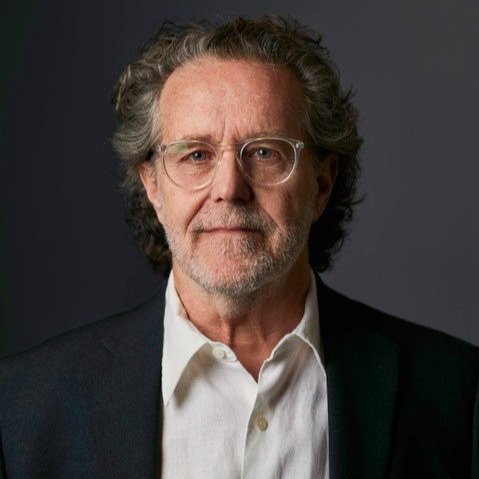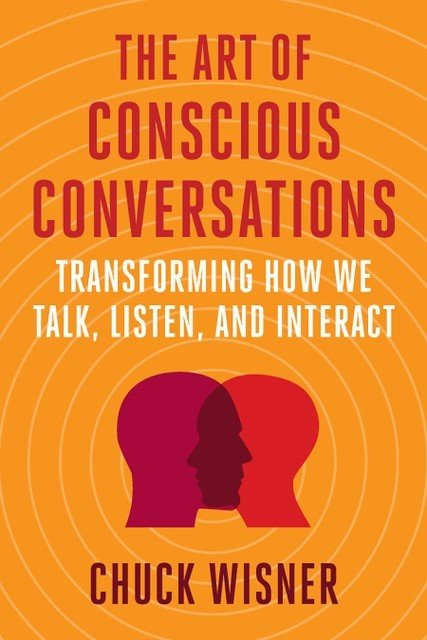‘Had I Only Understood This Earlier in My Life’
Chuck Wisner is a business and personal consultant and author of THE ART OF CONSCIOUS CONVERSATIONS: Transforming How We Talk, Listen, and Interact.
Communicating is simple. Doing it effectively, we all learn, can be much more challenging, frustrating, painful and dangerous. Chuck Wisner would like to talk about how we might be able to do it better and easier.
Wisner spent twenty-five years as a business and personal consultant and a trusted advisor to leaders in high-profile companies such as Google, Apple, Tesla, General Motors, Shell and others.
He is a teacher in the areas of organizational strategy, human dynamics, and leadership communication excellence. And now he’s written a book to help readers learn how to let go of deeply held problematic beliefs and conversational patterns.
THE ART OF CONSCIOUS CONVERSATIONS:
Transforming How We Talk, Listen, and Interact
The book is also aimed at helping readers become more conscious of their internal dialogues, word choice and interactions — and the resulting intended or unintended consequences.
The methods are anchored in leading-edge research, theoretical development and the practical application of the foundations of conversations.
The seed of thought to write the book and the motivation to commit to writing it was rooted in conversations Wisner had, as well as questions that he heard and feedback given.
“Twenty years ago, I was meeting with a client, Jami, to post his completion of a Transformational Leadership Program offered through MIT. As we discussed the program's impact on his life, he said, ‘You know, I've learned so many meaningful tools from mindfulness to leadership skills, but I am not sure how they all hang together,” Wisner recalls.
“How does emotional intelligence affect how we communicate? How do mental models limit our perceptions of the world,” his client asked aloud. This stimulated thought in Wisner’s mind too.
“His questions sparked my curiosity, and I remember contemplating them for quite a while. And one day, the answer came to me during a walk on the beach,” he remembers.
“The linguistic model of four types of conversations could provide structure to organize the tools and practices. Each conversation teaches different lessons about talking, listening and interacting,” he concluded.
Wisner listened well to people and saw a pattern, grabbing his attention and providing a motivational spark.
“And over time, clients would say to me, ‘why didn't I learn this in kindergarten,’ or ‘Had I only understood this earlier in my life!’ Those comments and aha(!) moments kept me in the game of writing the book, and it has been quite the journey.”
In his work with leaders of well-known organization, of course he would notice strengths and weaknesses that led to memorable observations, keen analysis and important lessons.
“Each company I've been trusted to peer inside has evolved to have different cultures and leadership patterns,” he learned. “In general, most leaders rise through the ranks of their companies based on their expertise and competence at a particular job. And when they advance to be managers or leaders, they have little training and can be victims of a well-established culture.
“My better clients’ biggest strengths are their intentions to do great work and their willingness to learn and grow as leaders,” Wisner says. “And for others, their weakness is blind ambition and an ‘I don't need help’ attitude, accompanied by a sense of entitlement.”
Leadership as a successful driver of objectives might not be fully understood by organizations and part of the reason is the fact it has so many moving parts to grasp, become competent at, review and adjust.
“So much of leadership is about clarity of purpose and communication,”
Wisner says. “And just like Jami in the example above, there are so many variables — communication styles, wise decision-making, setting goals and clear expectations, fairness and accountability — that it can be overwhelming.
“Most people I've worked with have good intentions and they want to serve and succeed, but many bad habits emerge without taking the time to be more self-aware and learn how they can best lead.”
This leads to problems because the wrong habitual behavior emerges.
“By default, leaders' personalities take over. I have worked with leaders from the extremes of being overbearing to uncommunicative,” Wisner says.
What he’s learned is how the more successful outcomes leaders have achieved is tied to humility and open-mindedness when it comes to their professional and personal development.
“My best clients aren't those sent to be fixed, but they are great leaders that accept their limitations and are willing to explore their thinking and behavior by engaging with a coach/advisor to stay on top of their game,” he says.
Numerous challenges with communication originate from the different experiences, interpretations and mindsets that people bring to interactions.
“Letting go of deeply held beliefs starts with self-awareness and vulnerability,” Wisner says. “Our interactions and reactions are conversational patterns. I like calling them patterns because it is less judgmental and caught in a spiral of negativity of criticizing ourselves.”
What is helpful is considering how we analyze what is taking place in communication.
“When we label how we talk or listen as patterns, we can observe them without negativity. Rather than identifying with them, we can have some distance and see them as productive or unproductive.
“We can practice changing our thinking and reactions with self-awareness and understanding. So first, recognize patterns, and second, practice changing them.
“I say ‘practice’ because it is like learning to play golf or the piano; it takes time to change old habits,” Wisner says. “I say ‘vulnerability’ because much of our patterned thinking is cultural in that we are trained to have answers, compete and think we have to be the most intelligent person in the room.”
Ironically, the more more professionals climb the ladder in their career, the more there is to know and the less probable it is that someone will be knowledgeable about all that is required to understand.
“The more a leader rises to the C-suite, the more likely it is that they don't — and can't have — all the answers. Vulnerability at work or home is the antidote to our cultural patterns of being the know-it-all.”
Wisner has written that curiosity and courage leads to “minimizing conflict, maximizing collaboration, creating new possibilities and generating wiser decisions.”
As for how that answer-seeking and assertiveness is best accomplished, he has insights and recommendations.
“In conflict, we often defend our perspective or position on a particular subject. I liken this to entering a conversation or meeting with a closed fist,” he says.
“We have our view, and with our ego fully intact, our minds are busy peddling our perspective and our ability to hear or absorb other views is impossible,” Wisner points out.
“When we multiply that pattern by ten in a meeting, we have many fists clashing and bickering. Collaboration and idea generation is lost and decisions are often made in a rush and not fully vetted,” he continues.
What can help break that behavior is his afore-mentioned commitment and reframing.
“It takes courage to recognize a pattern of defensiveness,” Wisner says. “We can be courageous and curious when we learn to shift our closed-fisted presentation to an open hand.
“This does not require us to give up our position but to hold it open and reveal the thinking behind our perspective,” he asserts.
He teaches this in the book.
“I introduce four archetypal questions as a guide for exploring the thinking behind our thinking. The four questions are:
What are my desires?
What concerns do I have?
Are there issues of authority or power at play?
What standards are driving my opinion?
“The four questions go a long way in helping us engage in any type of conversation with courage, curiosity and vulnerability,” Wisner says.
Sometimes people feel communication expectations are too rigid for their comfort and liking. A reframing of perception, emotions and conclusions could inspire adjustments, actions and progress.
“There is so much written about communication. ‘Do this, don’t do that!’ How to keep track,” Wisner admits.
“One major thing that can help people adjust and learn is to accept that everyone comes to the table with a point of view,” he points out.
“The first part of my book is about storytelling conversations. Our stories are made up of facts, opinions and the emotional reactions accompanying them,” Wisner says.“It is so easy to identify with and get stuck with our stories.”
He talks about his own life and challenges from the stories in it.
“I grew up living the story I adopted from my grandfather, that I wasn’t a big enough man. That was a heavy burden. As I studied language and did my work, I busted that damn story, dramatically shifting my thinking, self-confidence and interactions,” Wisner remembers.
Each person has a story that can be equally hard to examine deeply, question and overcome.
“Understanding and accepting that we are all in the same boat telling stories and often reacting and acting out on autopilot, we can relax, let down our guard, explore our thinking and with a dash of vulnerability, open up with others,” Wisner says.
Remembering a particular piece of wisdom that Wisner is fond of can be useful in our judgments about situations and other people
“I love the quote attributed to Aristotle, ‘Be kind, for everyone you meet is fighting a hard battle,’” he says, adding, “It takes one person to stop the battle.”
As for the author’s intentions for the work.
“I intended to coalesce and connect different ideas and concepts about language and conversations that previously were not accessible,” he says of the grand vision. “I hope the book opens eyes and ears, hearts and minds to think about and practice conversations more consciously.”
He has recommendations for those who pick up and engage with the book by reading it and thinking deeply as they do.
“I advise readers to take it slow and be kind to themselves,” he begins.
“Minimize self-judgment and observe your patterns with curiosity and a sense of humor. Read each chapter and apply it to yourself before you judge others.
“Not all of the book, but I guarantee that some parts, will help you reframe your thinking, reconsider your judgments and reevaluate and change your patterns that are not serving you well.”

